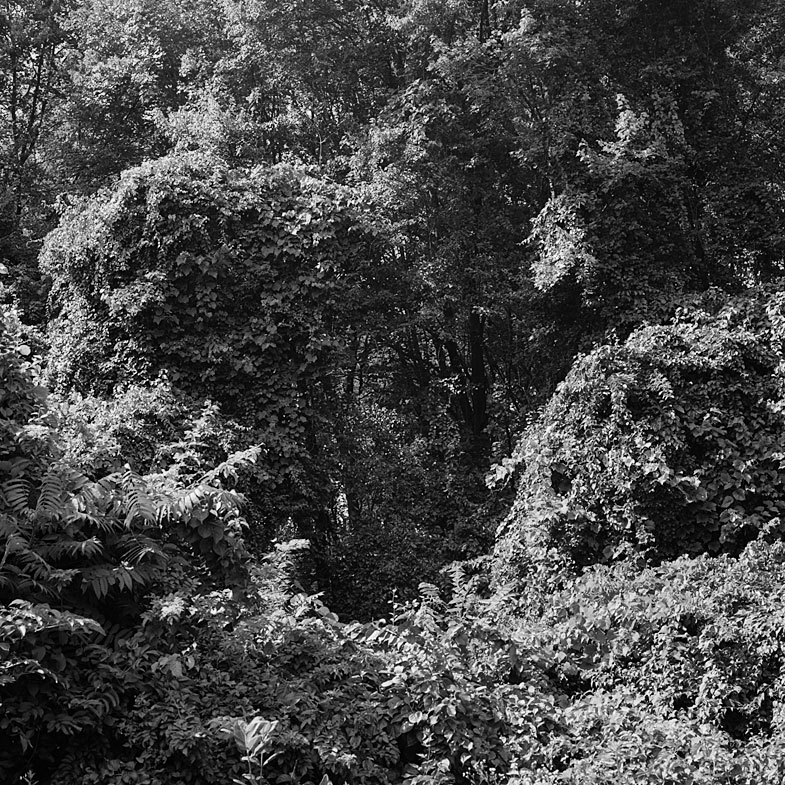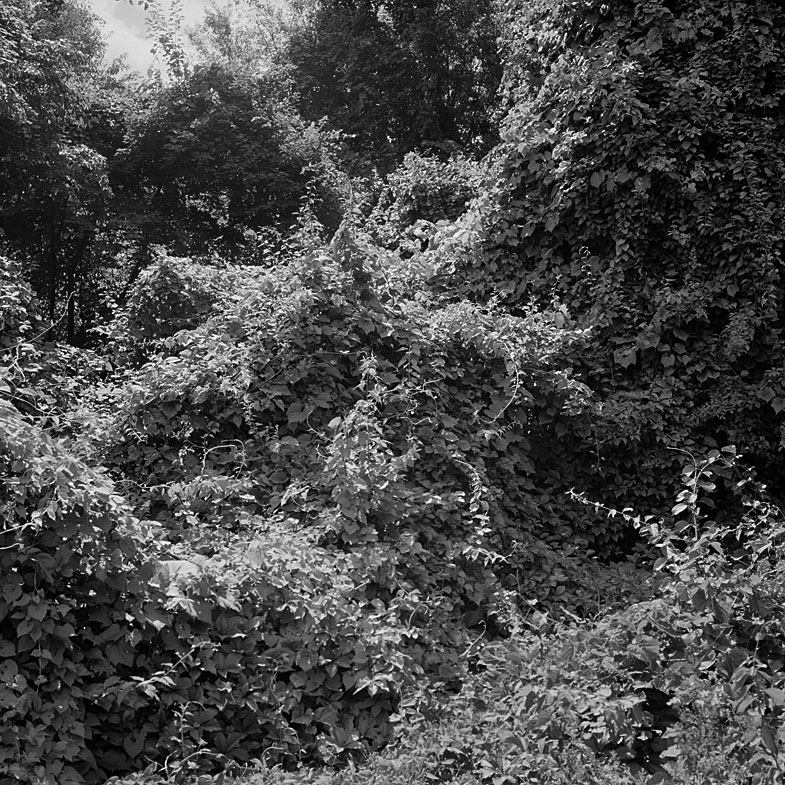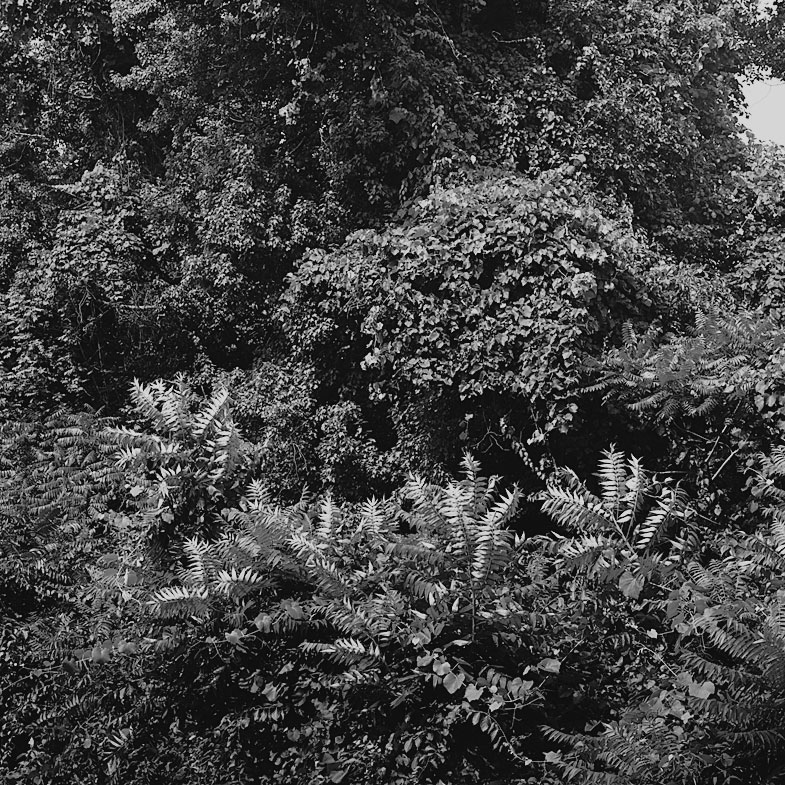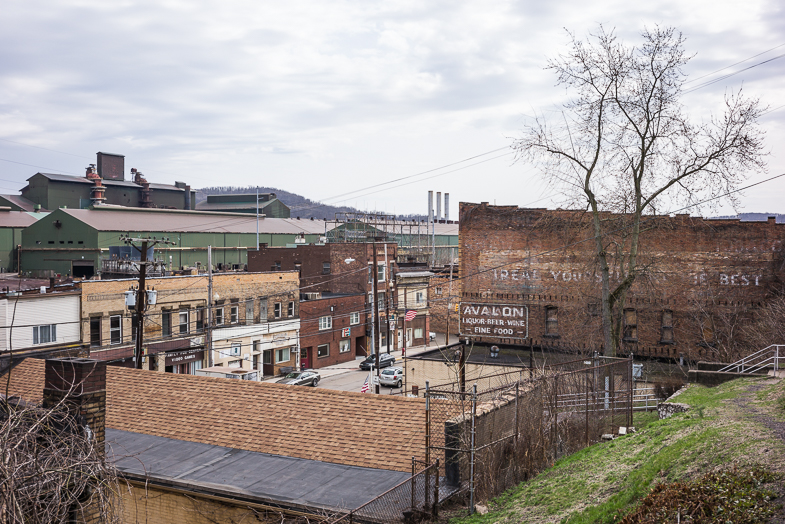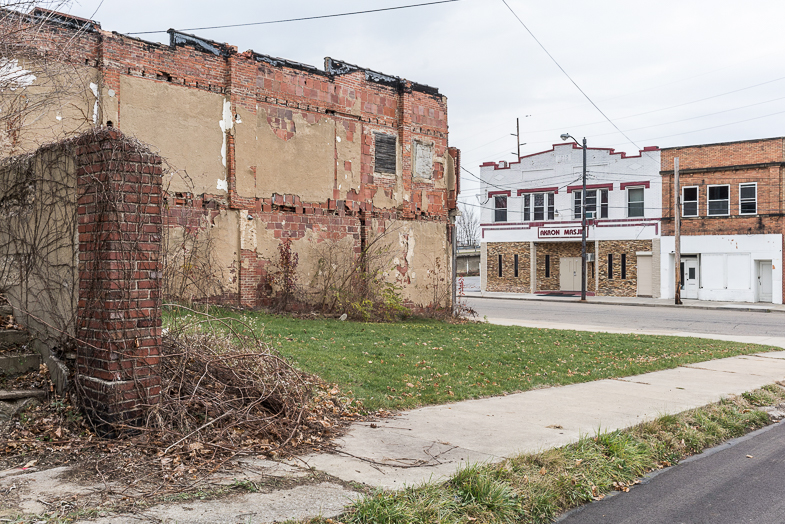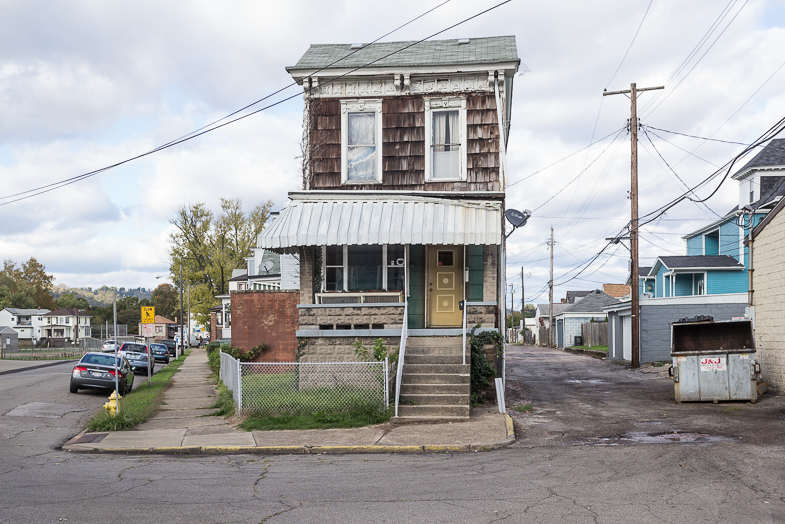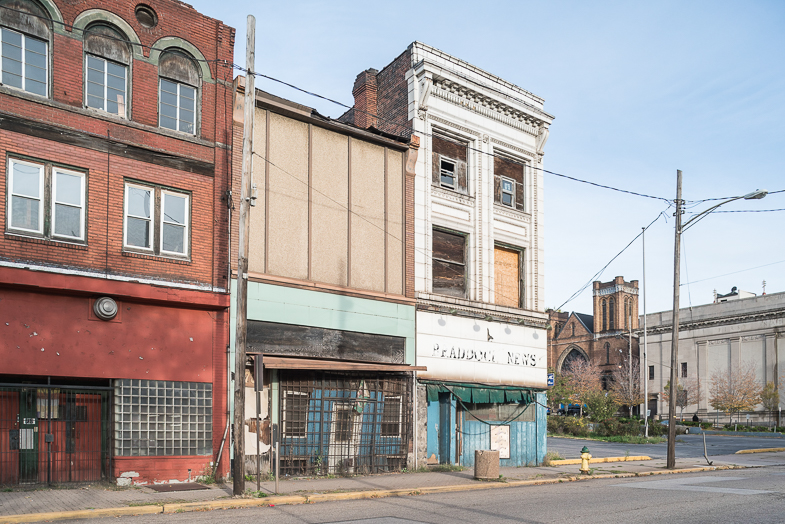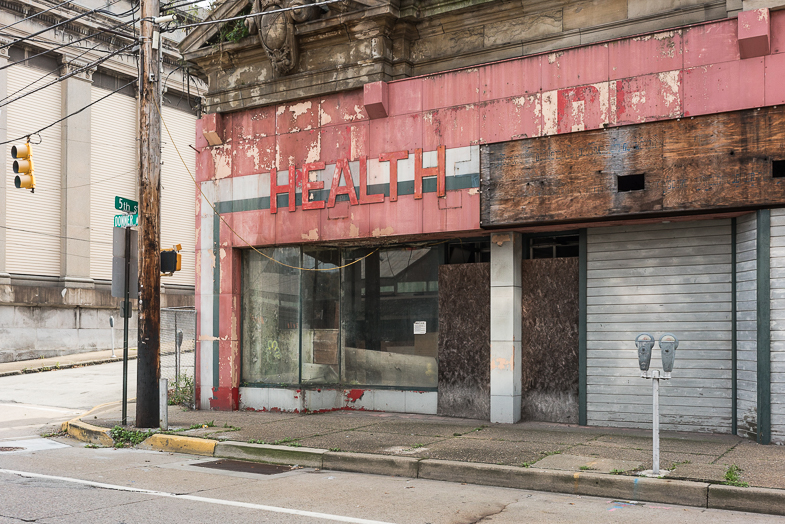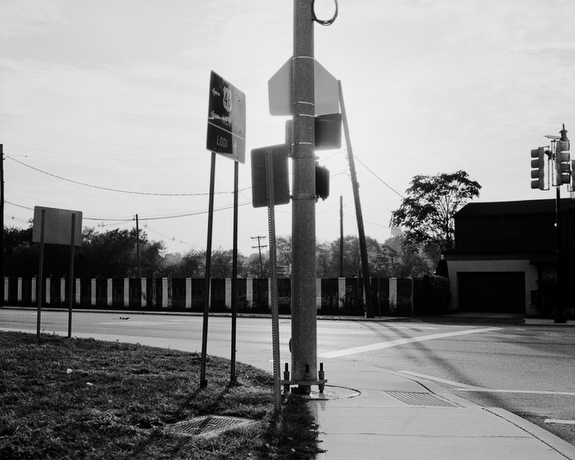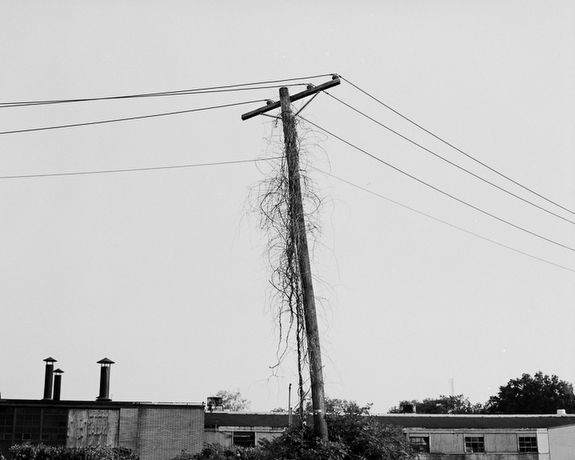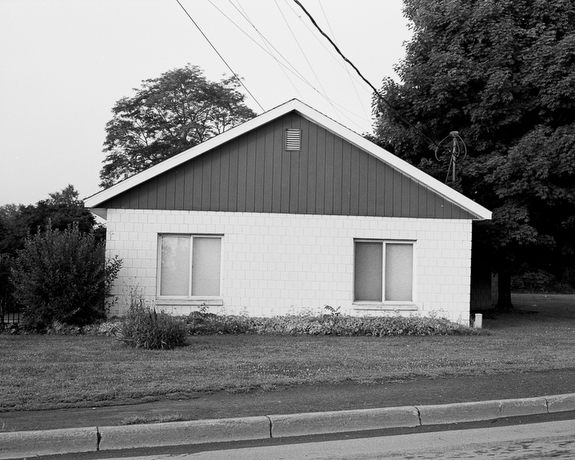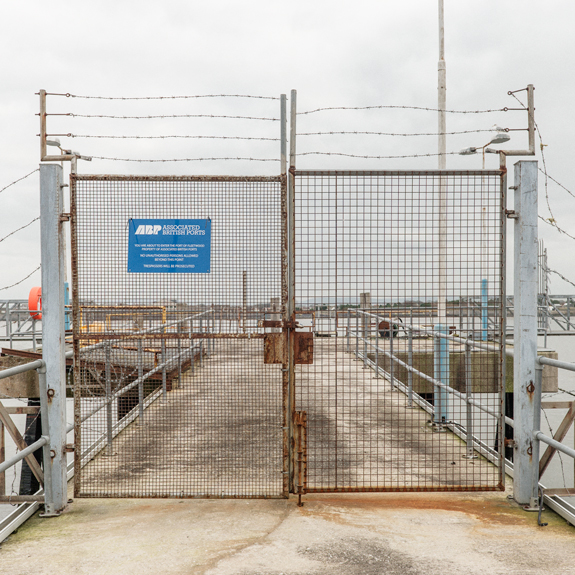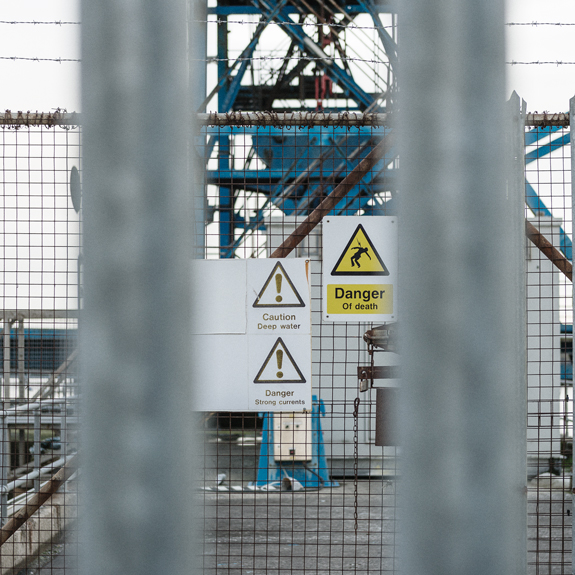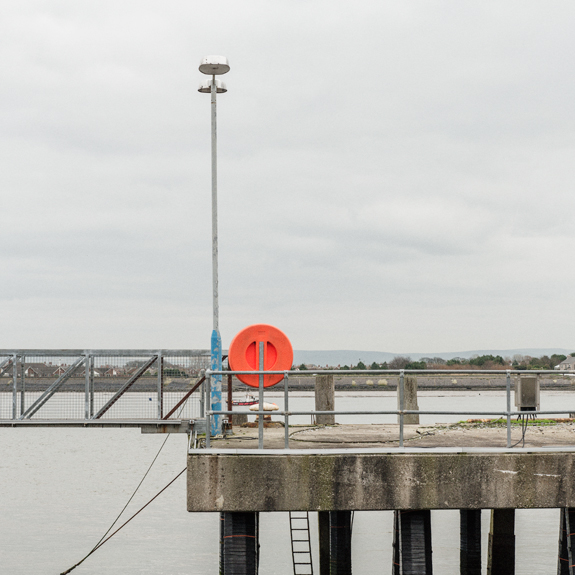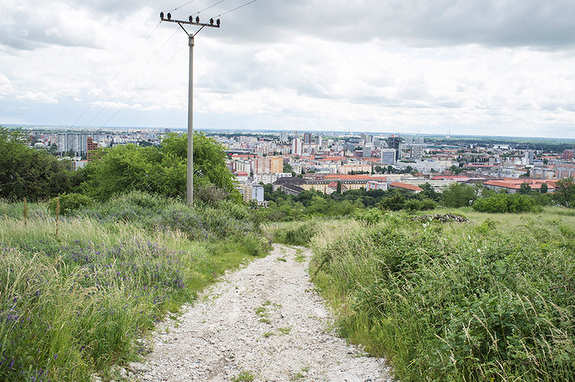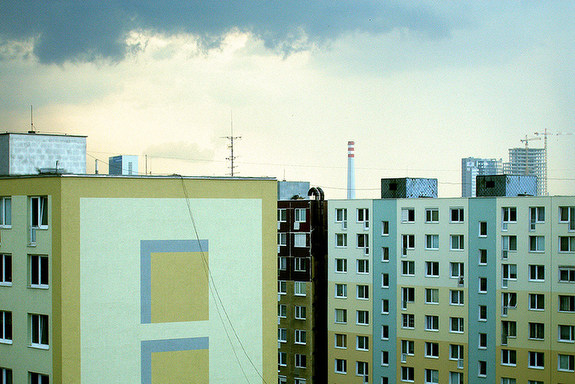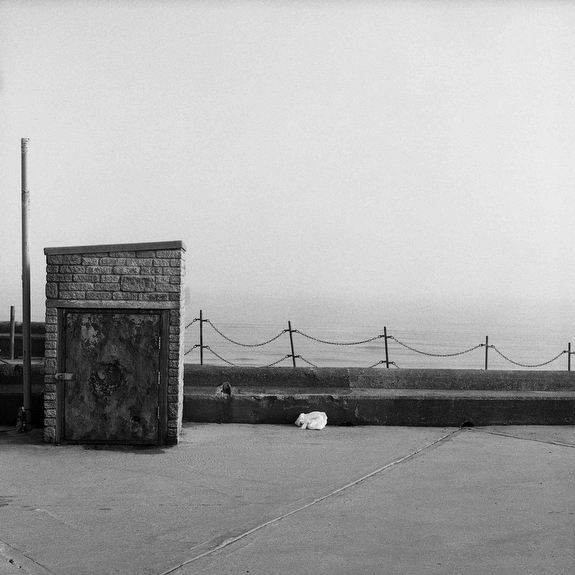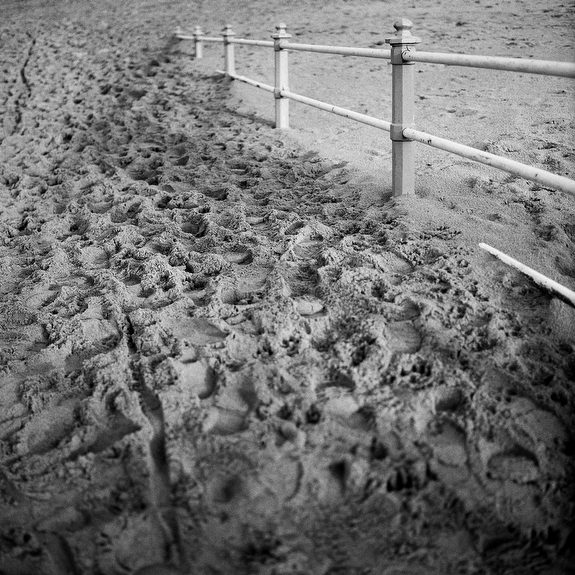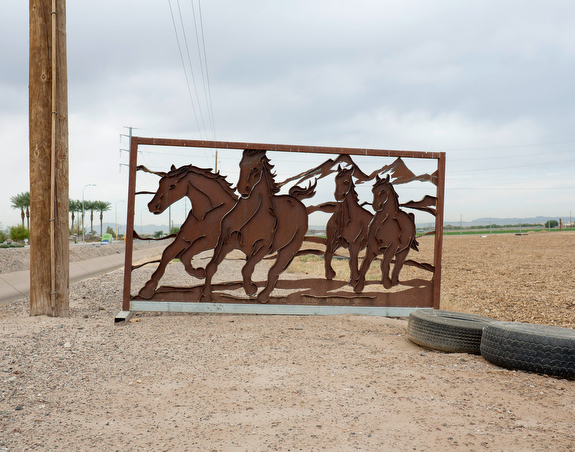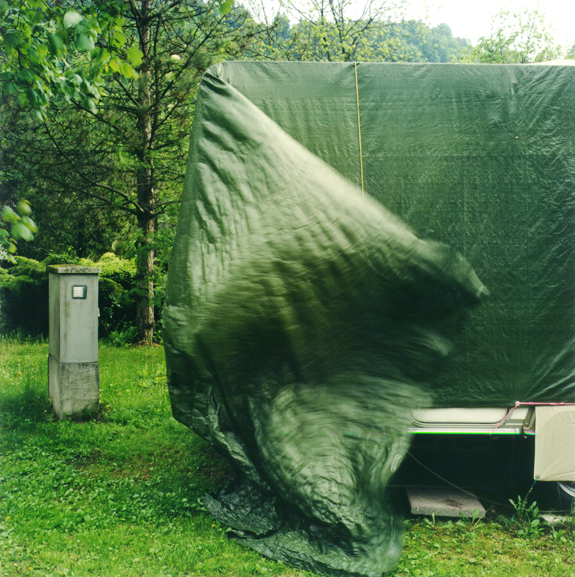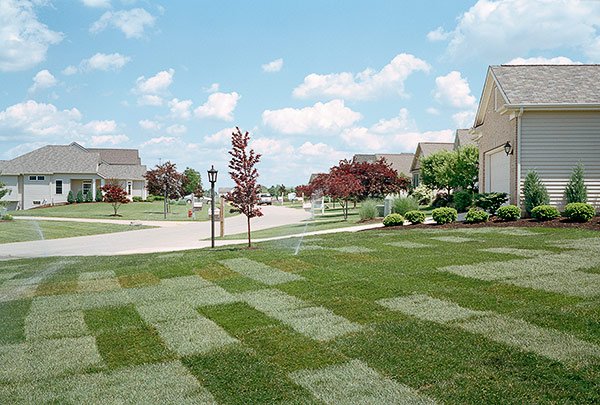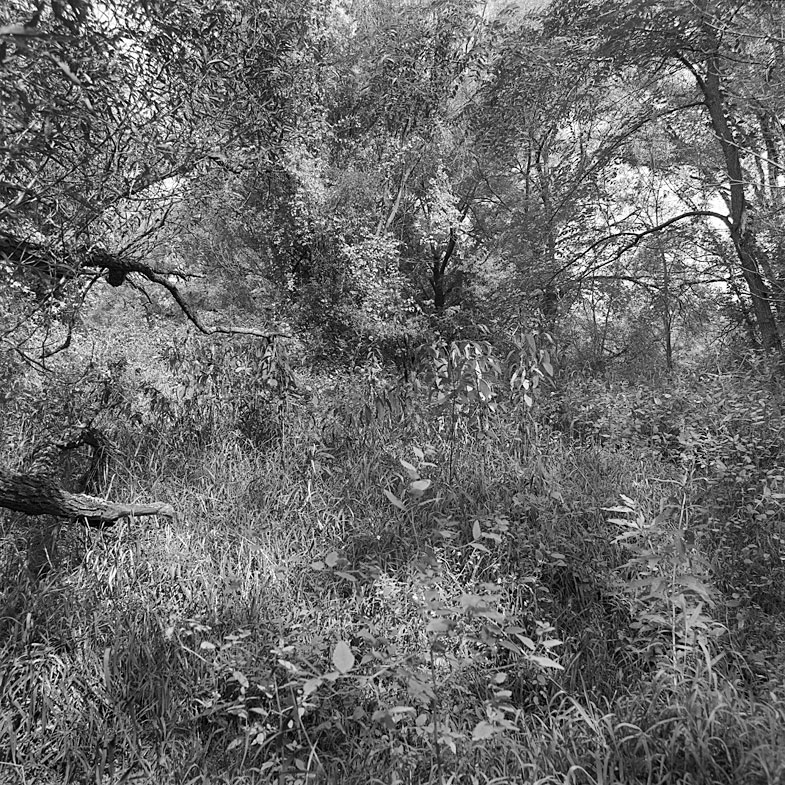
For the past several decades, I have focused on the mankind-made and -altered landscape. Verdure is a departure from this in that there is no obvious evidence of “the hand of mankind” altering the landscape. This project started out as an ostensibly documentary series of bittersweet vines’ ability to overcome just about any plant, tree or even structure, covering them in relatively short order. The series quickly morphed and became more purely a study of abstraction in greenery, with an “all-over-ness” approach, a description used by a couple of abstract painter friends.
While my usual approach is to examine the mankind-altered landscape, another aspect of my work is that mentioned above: abstraction in that landscape. (See Rockface on my website.) Very loosely defined, the Verdure images fit into the altered landscape approach, as they are of the results of landscape being exposed when roads are built. Trees grow differently then and bittersweet and grape vines find new armatures, as it were, on which to spread – rampantly – as they are exposed to full sun.
Andrew Buck, Farmington, Connecticut, USA

